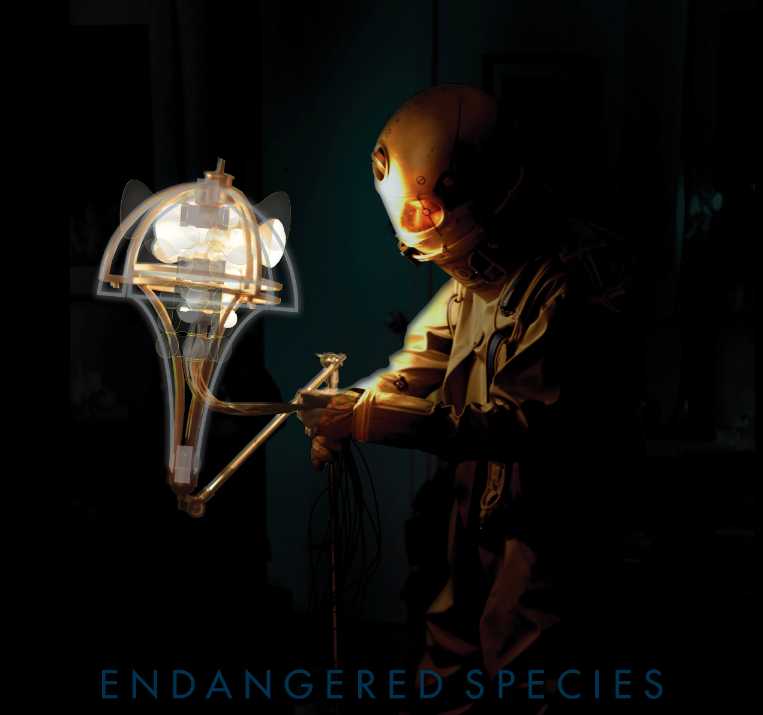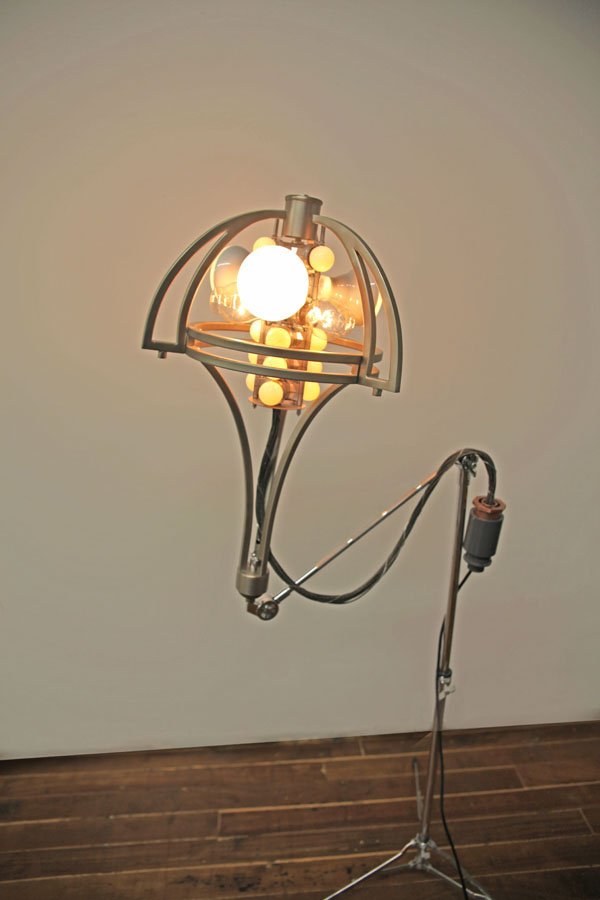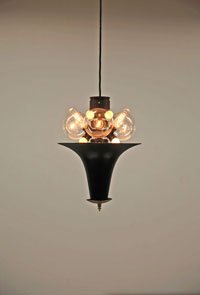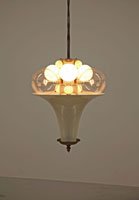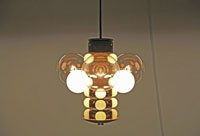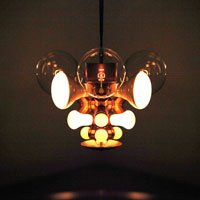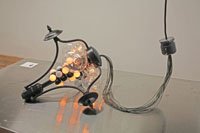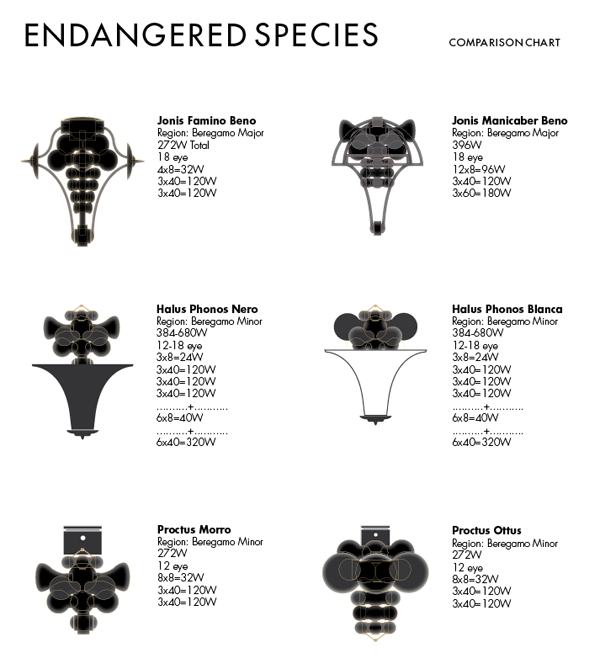ABOUT THE SHOW
Specific lighting technologies such as incandescent light bulbs are being phazed out, in effect becoming extinct.
Endangered species is an exhibition showcasing the often overlooked beauty of the incandescent light bulb through a series of sculptural pieces. Form, structure, and light weave together into rare exotic creatures. Each piece is introduced to the viewer as one of the few remaining inhabitants of distant and exotic places. Information about their origins, geographical location, and scientific names are all presented alongside the pieces.
click to enlarge:
For its almost 150 years of existence, the light bulb has been hidden underneath lampshades of every imaginable design, varying in colour, size, form, and material. Ironically, the shape of the light bulb has become almost as well known as the standard shape of an arrow in communication graphics, and has been coined to represent bright ideas and imagination in many graphic applications.
The Endangered Species exhibition re-envisions the often overlooked beauty of the incandescent light bulb and exposes it outside of the lampshade, through a series of sculptural pieces.
THE STORY OF THE INCANDESCENT LIGHT BULB
The invention of the incandescent light bulb is somewhat of a mystery.
The first electrical lighting discoveries and light bulb designs appeared in the 1830s and continued over the next 50 years or so. Claims to fame are scattered across Europe and the Americas – they can be shared by a series of inventors of different light source bulbs, varying in filament/wire type, length of time that illumination would occur, and strength and spread of the light. The inventors are:
• James Bowman Lindsay, Scotland
• Warren de la Rue, Britain
• Frederick de Moleyns, Britain
• Jean Eugène Robert-Houdin, France
• John W. Starr, USA
• Alexander Lodygin, Russia and USA
• Henry Woodward and Mathew Evans, Canada
• Thomas Edison, USA
• Joseph Swan, Britain
(And most likely many more individual who didn’t officially make into Wikipedia)
|
Further Developments.
The first public building in the world to be lit entirely by electricity was the Savoy Theatre in London, England, with Joseph Swan’s incandescent light bulbs in 1881. Thomas Edison was working in the meantime on improving the practicality of the light bulb and accomplished a design that could last over 1200hrs.
The year of 1904 marks the first commercialization of Tungsten filaments in incandescent light bulbs that promised longer lighting time. Previous to this, filaments were most often made of carbon or platinum, but other metals were also used. From then onwards, a number of advancements were made with respect to the type of tungsten used, as well the use of inert gas in a bulb instead of creating a vacuum for luminosity. Improvements were made in efficiency, production, and cost over the years that followed.
The environmental factor.
Approximately 90% of the power consumed by an incandescent light bulb is emitted as heat, rather than as visible light. Although there have been some practical uses of this type of bulb, such as for heating and lighting tanks for reptiles or in brooding boxes for poultry, the use of an incandescent light bulb in a household on an everyday basis is considered a waste of energy. More environmentally responsible alternatives for lighting are compact fluorescent lamps (CFLs), high-intensity halogens lamps, and LED lamps.
The road to extinction.
In 2007, President George Bush signed into law the Energy Independence and Security Act, which outlines energy efficiency requirements for light bulbs: by 2020, lights bulbs need to be 70 percent more efficient than today’s bulbs.
That same year in Canada, Ontario’s Minister of Energy, Dwight Duncan, announced the provincial government’s intention to ban all sales of incandescent light bulbs by 2012, and shortly after, the federal government made the same announcement for the entire nation, as part of a plan to cut down on emissions of greenhouse gases. This resulted in amendments to the Regulations in the Canadian Energy Efficiency Act, in both 2008 and 2011. The regulation sets a minimum performance level for bulbs imported into Canada or sold inter-provincially and will essentially phase out inefficient incandescent bulbs that range from 40 watts to 100 watts, by December 2014.
In September 2012, the EU implemented a ban on the sale of incandescent light bulbs ranging from 20W to 100W, under an ‘ecodesign regulation.’
The good news is that the switch in light bulbs can instigate savings of about $50 a year in energy bills if all light bulbs in a household were replaced for alternative lower energy types.
|

